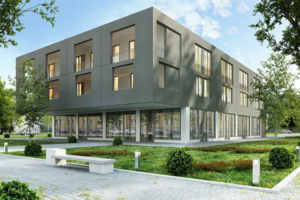June 28, 2021 by Timberline
Reducing energy consumption in a commercial building—and all the good that comes from that—is something that sounds good to everyone. However, putting that concept into practice may seem challenging. But it doesn’t have to. The key is to understand the “tools” you have available to you and then leverage them effectively.
What follows is a helpful checklist you can use to ensure you’re doing all you can to minimize energy consumption in your commercial buildings and maximize your financial savings.

Achieving Energy and Cost Savings… and Much More
Increasing monetary savings may be one of the main reasons for taking steps to reduce consumption, but there are other benefits as well. The first is the feeling of satisfaction that building occupants get when their actions contribute to positive change for the environment. For businesses, environmental stewardship is an attribute that can even have a positive impact on recruiting.
A second benefit is that taking a genuine interest in lowering your energy use can get the attention of potential customers. Like with recruiting, businesses want to associate with forward-thinking organizations that are trying to make a positive impact in their community and beyond.
Can You Check the Box on All of These Energy-Saving Tips?
Implementing any of the six strategies listed below will help you save energy and money. Implement all of them and you’ll be pleasantly surprised at how much you can save!
- Incorporate energy efficiency into your construction or renovation plans. There are definitely ways to reduce energy consumption in a commercial building after it’s constructed or renovated. But if you’re able to design a facility or an addition in such a way that it’s highly energy efficient, that’s a win right from the day the building opens for business. Of course, HVAC experts can provide valuable insights as you create your design.
- Retrofit your existing HVAC system. Not surprisingly, the latest HVAC systems tend to be the most energy-efficient solutions. But if you don’t have the budget for implementing a new system, targeted upgrades can be a cost-effective alternative. For example, replacing old, inefficient equipment can provide significant energy savings.
- Capitalize on the shift to remote working. One of the many lessons the COVID-19 pandemic taught companies is that being productive doesn’t have to mean being in the office. Even now, as restrictions have been eased and life is returning to something closer to normal, it’s likely that many businesses will retain the more flexible approach to remote working that employees have grown accustomed to. If that’s the case for businesses in your commercial building, you may have opportunities for energy savings, particularly if entire businesses are away from the building at the same time—things like shutting off lights in certain areas or changing heating/cooling settings where it makes sense. And through collaboration with business owners, you may find even more ways to save.
- Incentivize energy savings. If getting buy-in from building occupants on energy-saving measures saves you money, consider passing a portion of those savings along to them in some way. Whether that’s a small rent reduction or simply sending some pizzas their way for a Friday lunch, recognizing their efforts will help ensure they continue to be energy-conscious consumers.
- Think outside the building. How you choose to landscape the area around your commercial building can have an impact on the energy needed to heat and cool it. For example, trees love the sun’s intense rays—heat energy that your air conditioning system is constantly working to overcome, so creating more shade is helpful. And if those trees are the type that drop their leaves in the fall, they let more warming sunshine hit the building in the colder months.
- Adopt a continuous-improvement mentality. Too often, energy conservation measures get implemented and then commercial building owners and occupants turn their focus to other issues. The businesses that operate with the highest energy efficiency tend to be those that continually set new objectives for themselves. Collectively your occupants achieved the goal of cutting energy consumption and energy bills by 3%? That’s great! And now is the perfect time for everyone to set their sights on 5%.
Capitalize on Tax Credits and Other Programs
If you plan to make changes to your building or infrastructure that will reduce your energy consumption and carbon footprint, keep in mind that there are many programs through various entities and agencies that can help you pay for products and services. This includes things like affordable financing options, tax credits, rebates, grants, loans, and other incentives.
The time and effort you spend researching these kinds of programs at the local, regional, and national levels very quickly will pay for itself in the energy and cost savings you experience. Then, every penny saved goes right back into your pocket. Or more accurately, it stays there! Unless, of course, you decide to put your savings toward more building upgrades, acquiring more property, etc.
So Many Ways to Save Energy in Commercial Buildings
For ways to reduce your energy consumption that are specific to heating and cooling solutions, check out 8 Ways to Save Energy With Commercial HVAC Systems. It’s a quick read with actionable insights that can deliver immediate improvements.
If you have questions about the services we provide and HVAC solutions we develop for businesses and homeowners, please contact Timberline Mechanical at your convenience.
